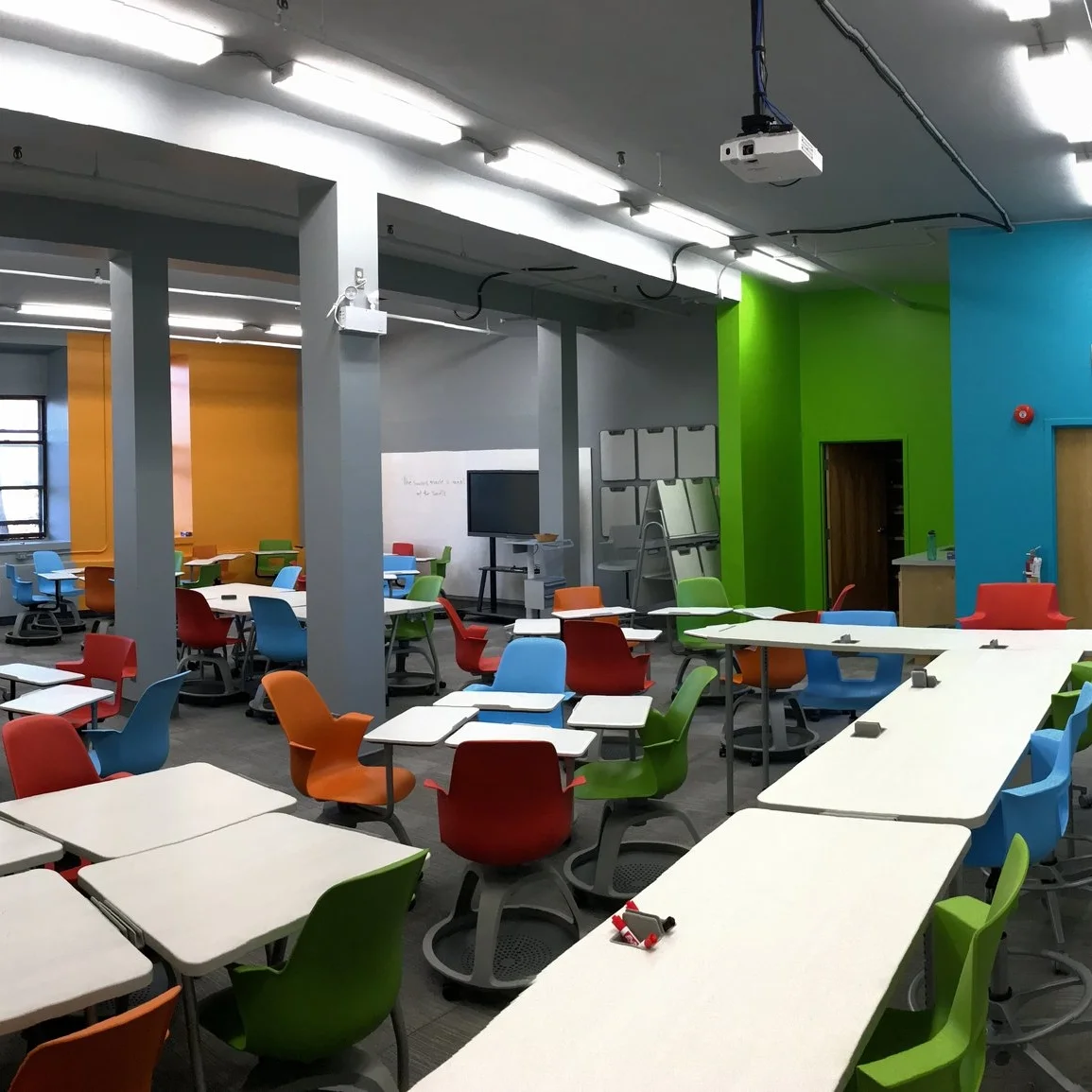SPACE MATTERS: The 7 Principles of Universal Instructional Design
An earlier blog entry outlined the various factors that we are researching as part of the changing nature of teaching and learning here at Mount Allison, including the early results from our Fall 2018 classes where we found that we need to be thinking about the physical space and furniture being used in designing our classrooms. One of our recent student focus group comments from the Learning Lab experience highlighted this important point:
I love the space and the flexible seating. This type of space it is a game changer for teaching and learning at MTA. It is really the first time that I have felt like I am a participant in my own learning. I feel that all of my individual learning needs are being met while I am in this space and I can be a full and active member of the class.
Students and faculty members have traditionally not been involved in the design of learning spaces or the selection of the furnishings for our classrooms. Indeed, the building where the Learning Lab is located is 110 years old and the room was formerly being used for storage. One of the most positive changes with the development of that space for the R-PEACE Learning Lab included a direct role in its design, which turned out to be a great new partnership with furniture companies, the university administration, facilities management, and our students.
The Lab design and use has also bee informed by R-PEACE’s prior and ongoing work with the Meighen Centre. The Centre is nationally recognized for its work with students who have learning disabilities and has recently expanded to include services for students with all types of disabilities. Several members of the Centre recently visited us in the Learning Lab, and we had a fascinating discussion about the University’s commitment to improving access to academic programs, to campus buildings and to support services for students with disabilities. Anne Comfort, the Director of Accessibility and Wellness at the Meighen Centre, discussed the critical role of the individual faculty member in providing the critical principles of Universal Instructional Design, including: 1) Accessibility to the course materials and content; 2) Flexibility in dealing with students and their special needs; 3) Making the course materials and classroom experiences straightforward and intuitive; 4) Providing effective and clear instructions in class and on assignments; 5) Creating a supportive and learning environment for all students; and 6) Minimizing unnecessary tasks and requirements. Anne often reminds us that Universal Design is good for everyone in the class as it makes the course instruction and materials easily accessible for all—that is, universal.
As we engaged with our students in this new space, it became apparent that we were being very deliberate in addressing a 7th principle of Universal Instructional Design—provision of adequate space that meets the needs of all learners. Traditional lecture halls with tiered levels of fixed seating increasingly do not meet the needs of our students. Posing logistical challenges to student movement, diversity of activity and group learning, they make it difficult to meet the goals of 21st century learning (creativity, communication, collaboration and critical thinking, to name a few). The Lab, then, is a means of exploring and testing the kinds of spaces our students need. Given the age of our campus, this 7th principle may be the most difficult to achieve in a global way, but it is clear to us that it is important to take such steps and to facilitate conversations about change. Here are just a couple of focus group comments:
In regular classrooms…Everything if focused on the front of the room and the traditional lecture style. This is so old school and it contributes to student apathy, a lack of engagement and a feeling that none of it matters.
In the new space, this type of learning style is very important to me, because I become more engaged in the topics at hand, and I don`t feel like I need to take as many notes because I am going to remember the heart of the discussion due to having genuinely paid attention and absorbed the material.
Meighen Centre staff are very interested in working in partnership with R-PEACE as we continue in our research on changing teaching and learning across the campus. If individual faculty members working together with the Meighen Centre are already working on bringing six of the seven principles of Universal Design to their classes, we might be able to more fully engage in the 7th principle of providing more appropriate “spaces” for the changes we wish to make in teaching and learning for all of our students. Stay tuned for some joint workshops on Universal Design for Instruction in the Learning Lab in the near future!
Sources:
Dawson, T. and Keenan, L. (Eds.) (2009) Universal Instructional Design. Victoria: First Choice Books.
Visual graphic from edutopia.org (for K-6 learners).
Meighen Centre: https://www.mta.ca/meighen/



